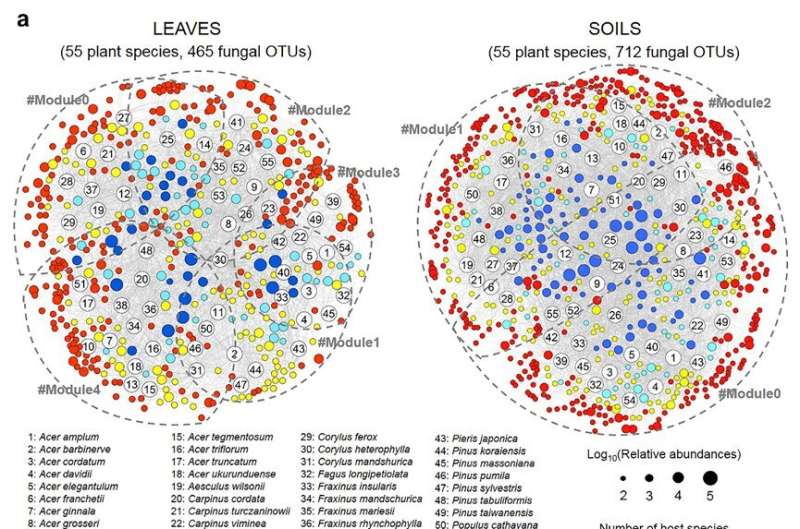
In a study published in Science China Life Sciences, a team surveyed hyper-diverse fungal communities in approximately 500 paired leaf and soil samples. These samples were associated with 55 tree species that are located over 2,000 kilometer span of mountain forests in eastern China.
Researchers say that it was easy. They spent two whole years completing the field sampling. They climbed mountains, searched for trees, collected soils and leaves, and so on. At the beginning of the study, the authors of the study sought to compare the fungal biogeographic patterns in leaves and soils. Previously, in The ISME Journal, they reported a significant phylogenetic imprint of trees on the soil fungal community composition in the same region which highlighted an evolutionary linkage between plant species and associated fungal communities below the ground.
However, when involving diverse plant species and large spatial scales, how the biogeographic pattern of fungal community in leaves differs from that observed in soils was still unknown at the time. As a result, they decided to dig deeper. In their latest paper, researchers found striking differences in fungal richness and community composition between leaves and soils.
For example, the soil fungal species number was about three times higher than that of foliar fungal community at the tree-individual level. Plant species identity and plant phylogeny drove the distribution of foliar fungal community, whereas the distribution of soil fungi was attributed to the interactive effects of plant phylogeny, climatic factors, and soil properties. This led to the determination that soil fungal communities beneath trees are fairly complex and are affected by multiple environmental factors whereas fungal community located in leaves are merely determined by plant host availability.
To clarify, cross-kingdom biotic interactions, for example, between plants and their animal pollinators or seed dispersers, are an attractive theme in ecological and biogeographic research fields and led to the development of early bipartite network theory. Specialization, modularity, and robustness are the critical network topological characteristics.
Specialization, therefore, describes the degree to which a host plant or fungal partner is restricted in its range of partners or hosts; modularity describes the extent to which the network is structured as different cohesive subgroups of nodes (i.e., modules), in which the density of interactions is higher within modules than among modules. Additionally, robustness represents the capability of a network to maintain its structure and organization when suffering from perturbance. Using the bipartite network theory, the team revealed the incongruent plant-fungus network topologies in aboveground and belowground habitats.
The plant-fungus networks in leaves exhibited significantly higher specialization, modularity and robustness, but less connected than those in soils. In addition, tree/fungus preference combinations and key species in bipartite networks differed strikingly between aboveground and belowground samples.
We hope you find this information as fascinating as we do. We look forward to bringing you more news like this in the weeks and months to come. Thank you, as always, for your readership.











